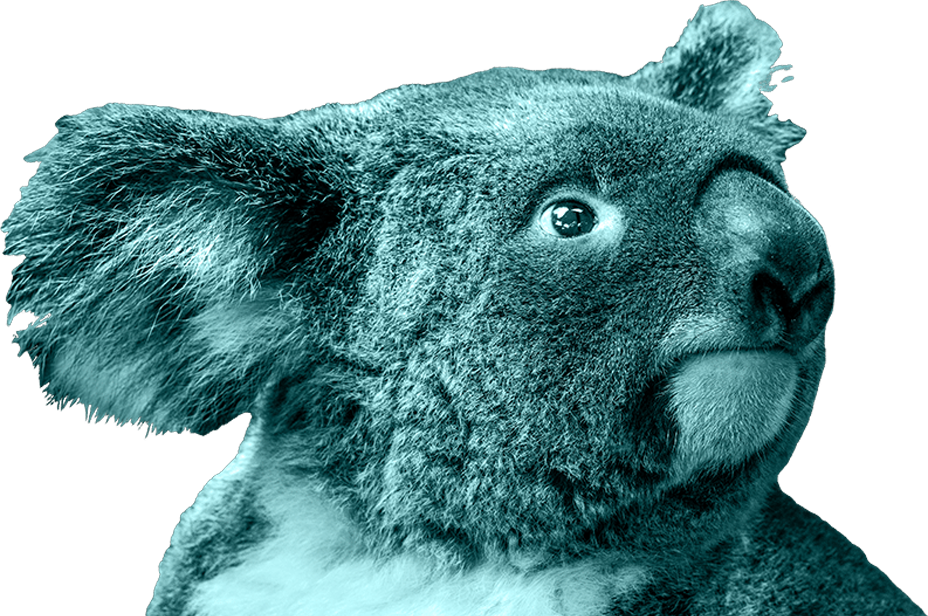Koalas are iconic
We see koalas on screens and food wrappers, in books and advertisements, even at world forums.

But the koala population in NSW today is just 52% of what it was in 2002.
Year
2002
Koalas
100%
Extinction
# Koalas
in 2002
100%
It is increasingly rare to see koalas in the wild — they are now vulnerable to extinction.
To understand why we’re losing koalas, we need to first understand their needs. Koalas are antisocial animals. More than anything else, they want to...
Sleep

Eat

To sleep and eat well, koalas need large forested areas for protection and feed
GOOD HABITAT
GOOD HABITAT
AND WIDE FORESTED CORRIDORS TO SAFELY TRAVEL BETWEEN AREAS
It’s that simple.
To survive, koalas just need suitable and plentiful habitat.
Koalas in NSW
This footage is from forests near Bellingen, in the Coffs Harbour hinterland:
These forests are some of NSW’s highest quality koala habitat: large, interconnected, biodiverse forests with plenty of gum trees.
In NSW, there are about 100,000 hectares of similar high quality habitat. Many of these areas are hotspots for urban development.
Just 16% of this core koala habitat is currently protected as national park.
19% is NSW state forest, meaning it is open for logging and urban development.
The remaining 65% is on private land, where owners can clear land with little oversight.
This is the fire scar of the 2019–20 bushfires, where one quarter of hubs were scorched and one third of the state’s koalas perished.
